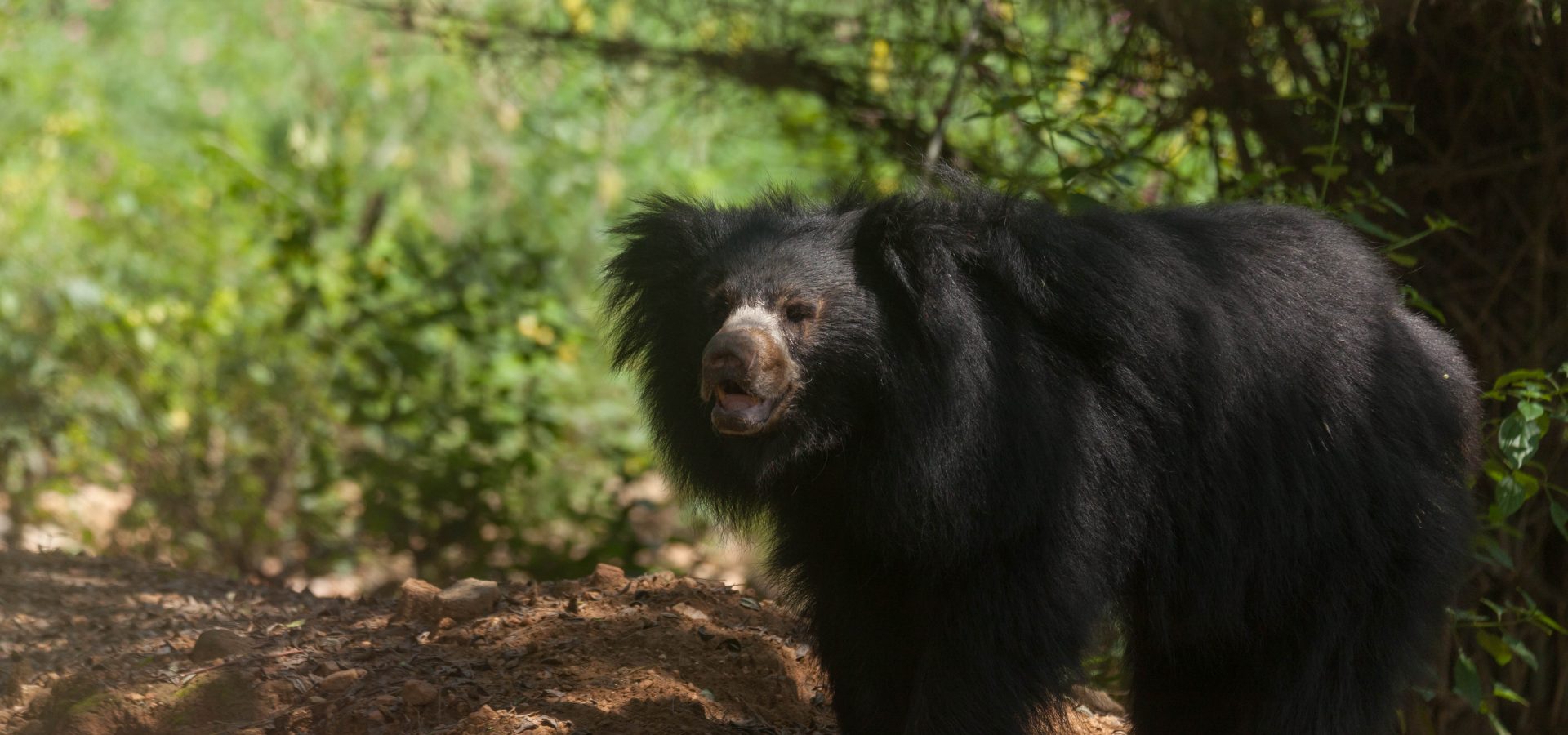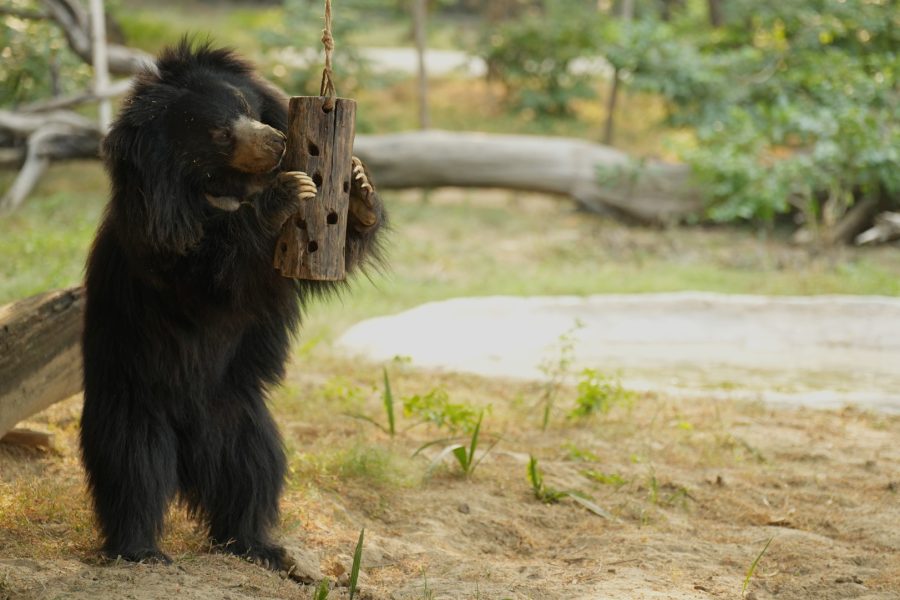As you step into the forest for your next adventure, you hope to spot your next wild wonder. You stumble upon a waterhole in the middle of the vast jungle and your zeal is beyond words. You wish to catch a glimpse of a Bengal tiger or a pack of Dholes as they arrive to drink water, so you crouch silently behind a bush, a few metres away from the waterhole. With a pair of binoculars in one hand and a camera in the other, this could be the moment!
After eagerly waiting for one long hour, you finally see a furry, black-bodied creature slowly making its way towards the water body. It’s a Sloth bear! Without making any sound, you position yourself to capture a photograph, but the bear has disappeared amongst the dry thickets… and suddenly, it is charging in your direction!
While this may be a hypothetical situation, it is plausible to encounter a Sloth bear in the wild. And if so… What can you do? Read on to know.
Natural Behaviour of Sloth Bears
Before we deal with how best to react in such a situation, it is essential to know all about this wild animal that resides in large parts across India. These are the key characteristics of a Sloth bear that one should be aware of:
- Sloth bears are myrmecophagous, which means that roughly 50% of their diet consists of termites and ants and the rest of it is fruits, seeds, and honey.
- They possess long claws, protrusible lips, and self-closing nostrils, and lack upper incisors because of their feeding habits.
- With strong and stocky limbs, bears can climb up trees to forage.
- Generally, adults are solitary and may come together during the mating season. Cubs tend to stay with their mother for their first 1-2 years.
- Sloth bears are territorial — they scratch trees and rub their bodies to leave their mark.
- Though they can be active throughout the day, these bears are predominantly crepuscular (energetic during low-light hours of dawn and dusk) and nocturnal.
- During the day, Sloth bears seek shelter in spaces like caves, under trees or bushes, or large rock crevices so they can get some sleep.
- They have an innate defensive-aggressive response to surprise or sudden encounters.
- Sloth bear activity and chances of attack vary according to the season, time of the day, and region.
- As a defence, Sloth bears stand upright to scare others away. They can also chase their predators or run for cover.
- Sloth bears have a strong sense of smell — they can sense the presence of any other animal.
Behavioural Approach for Encounters
According to research conducted by Wildlife SOS, Sloth bear attacks on humans are defensive in nature; Sloth bears do not see humans as ‘prey’. No attack on humans by Sloth bears has been documented as being predatorial. Most individuals who work and live in and around Sloth bear habitats are likely to encounter the bears. However, they may not necessarily possess firearms, sprays, or other bear deterrents for protection. Since these bears are considered to be unpredictable and aggressive, an in-depth study on what prompts the bear to attack can help to avoid them. What is equally important to know right now is how to behave when confronted by a Sloth bear.
After interviewing a total of 342 people, including those who were attacked or witnessed an attack and those who encountered Sloth bears but were not attacked, Wildlife SOS listed out the most common responses to confrontation:
- Fighting back
- Running
- Playing dead (lying on the ground with hands covering your head and not fighting back)
Of the three, “playing dead” was found to be the safest option. The study reveals that while this method has led to no fatalities, the victims did suffer moderate injuries. Hence, in order to survive an encounter, people are advised to fall to the ground without fighting back, and cover their heads and neck for protection. It is crucial to cover these regions because bears target them first.
Avoiding Encounters in the Wild
The best solution to minimise Sloth bear attacks and any conflict with humans is to avoid encounters. Here are cautionary measures that can prevent any interaction with the bear:
- Avoid walking through the forests alone and try travelling in small groups instead. In case you’re walking alone, carry a deterrent such as a stick or a whistle.
- Never walk alone in the dark or during the night time. In case this is absolutely necessary, always carry a torch light.
- In case you are driving, slow down your vehicle on roads near forested areas to avoid any fatalities and conflict.
- Don’t walk quietly. Making noise by talking, singing or clapping while moving through any habitat that is prone to Sloth bear encounters would prevent the bear from getting surprised and attacking in defence.
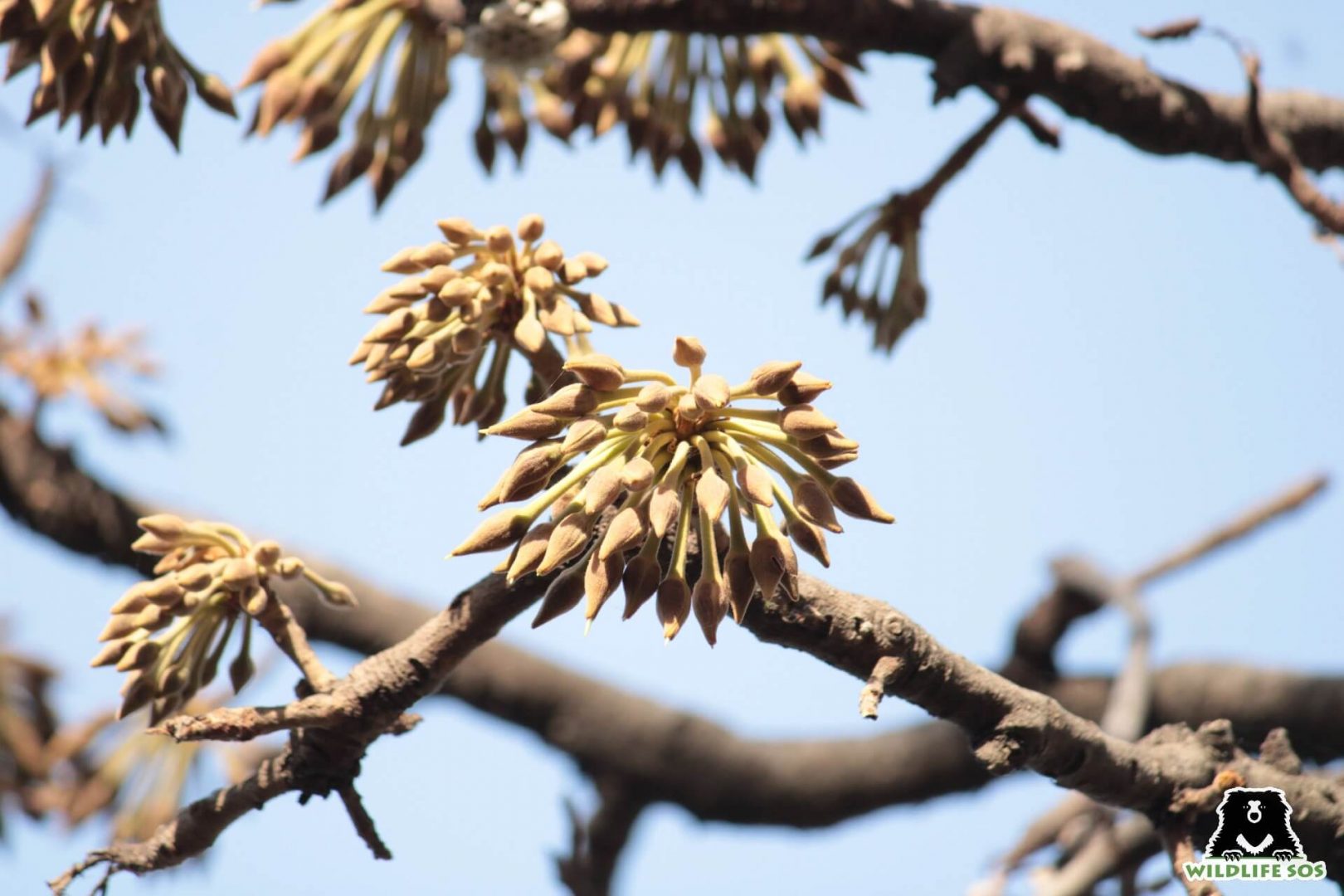
- Those living in nearby areas should avoid defecating in the open, especially before sunrise.
- Mahua trees and trees with honeycombs attract Sloth bears. Thus, it is strongly advised not to rest under these trees.
- People who rely on collecting forest products like Mahua or Tendu leaves, should do it only during the day. Any activity in the forest should be avoided at night.
- One must stay away from female Sloth bears with cubs, since mothers are protective of their offspring.
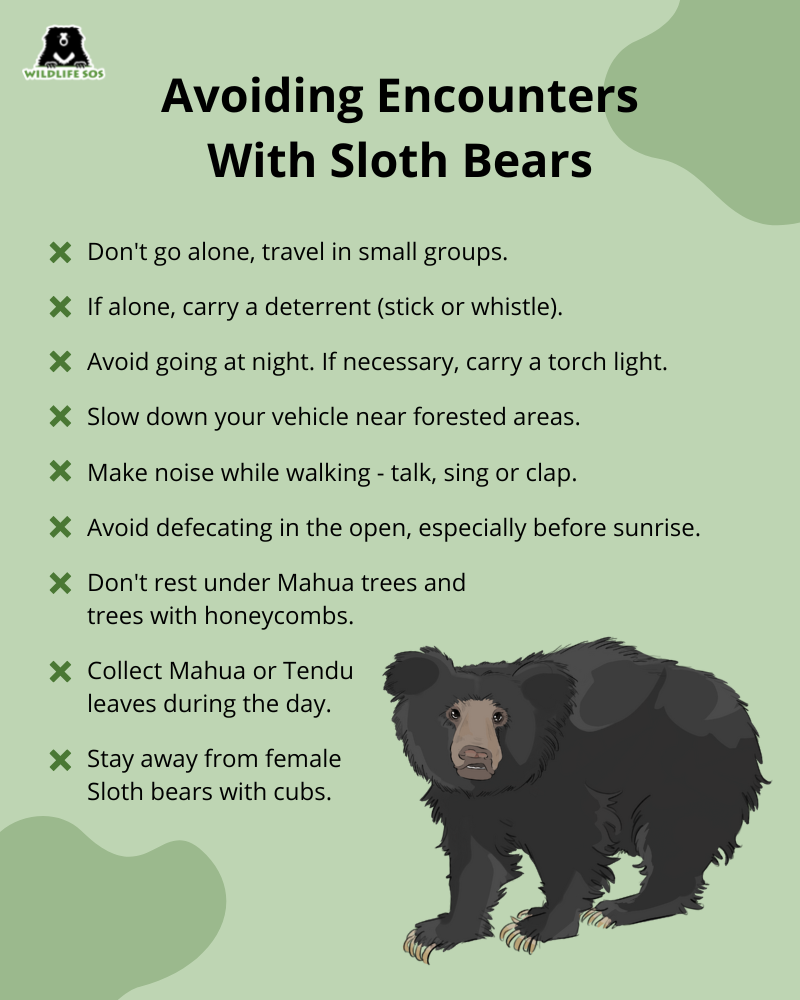
In Case of Encounters
If by any chance, you do come across a Sloth bear in the wild, here are some ways you can prevent an attack:
- When a bear is crossing the path in front of you, quietly retreat without startling it.
- Do not provoke the bear in any way, and maintain a safe distance.
- If the bear has seen you, stay still and wait till the bear moves away.
- Avoid running or making any noises to agitate the bear.
- If you’re in a group, do not ambush or surround the bear — come together instead, giving it space to move.
- In case a bear charges at you from a distance, swing your hands overhead and make noises.
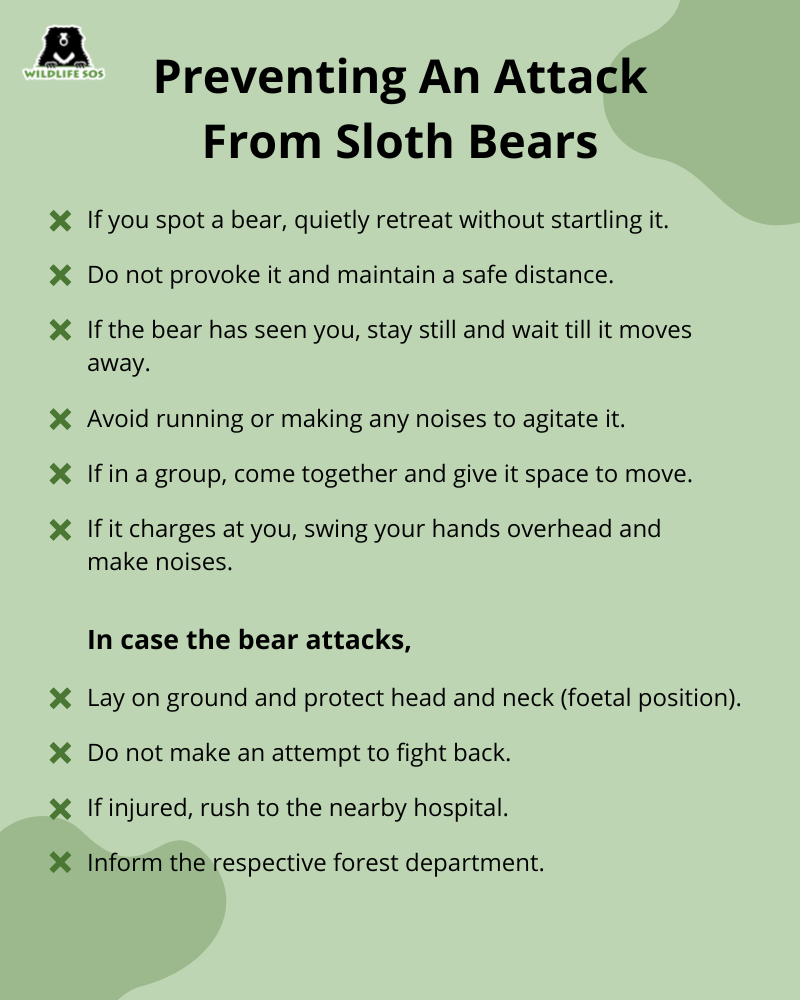
In case the bear does proceed to attack, the ideal response is to lay on the ground and protect your head and neck (a foetal position would help). Do not make an attempt to fight back — they may perceive you as a threat and respond aggressively. A person who has been attacked by a Sloth bear must be rushed to the nearby hospital. The respective forest department must also be informed.
Remember, Sloth bears do not attack unless threatened. Any attack that may happen is a result of their defence mechanism — if they are suddenly alarmed, feel intimidated, or need to protect their cubs. Although bear attacks on humans are rare, it is important to be alert and careful while walking into their habitat.
We encourage you to watch Living with Sloth bears, a public awareness film published by Wildlife SOS to educate not only the local communities living in Sloth bear-dominated regions, but also people who venture into such forests about conflict mitigation and co-existence in India. You can support the research work that our team does for Sloth bear conservation by making a donation.

